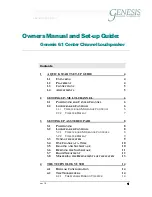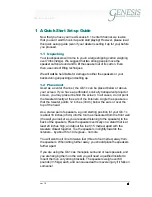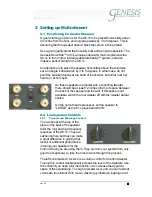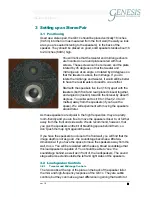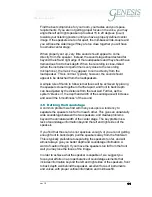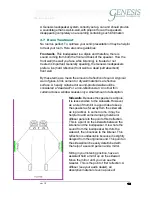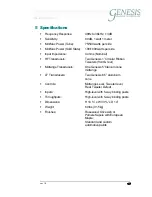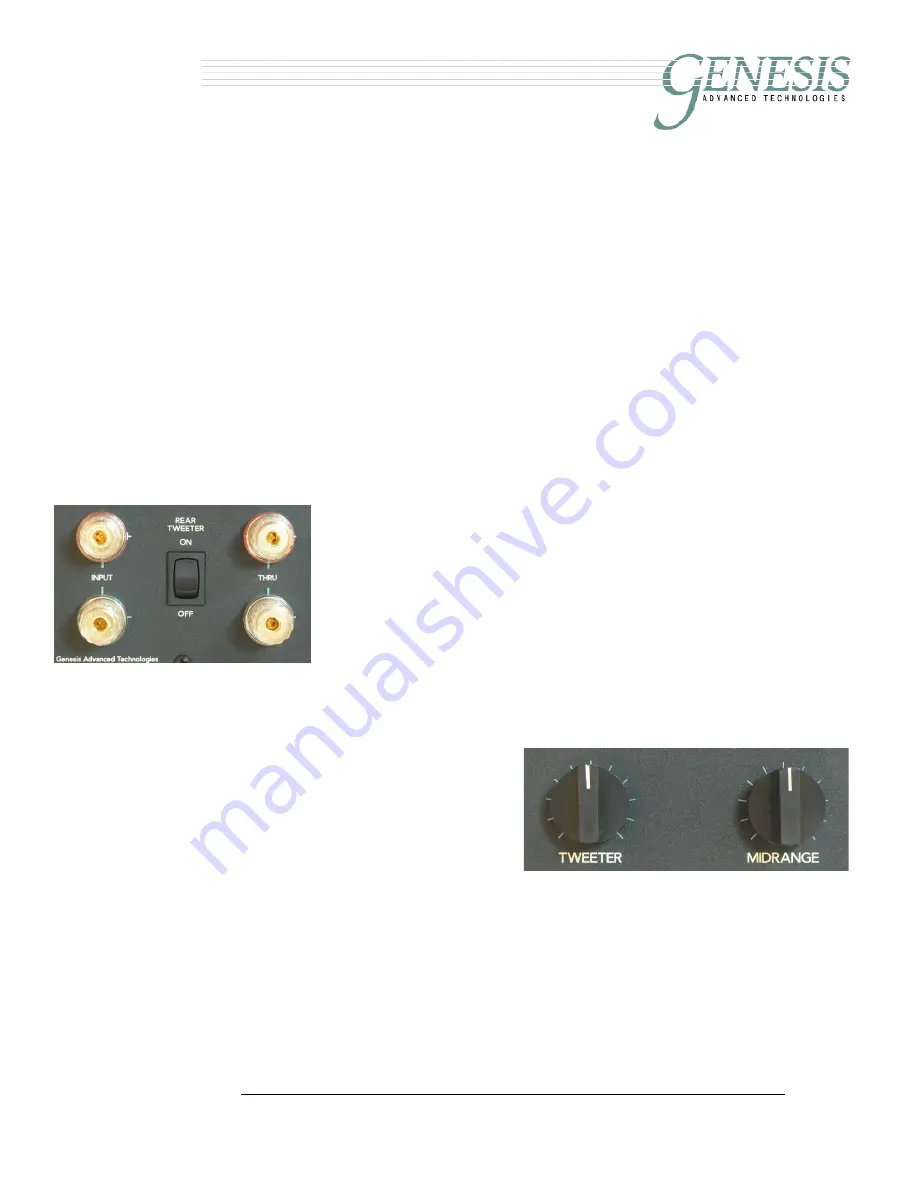
ver 1.0
6
66
6
~ÄëçäìíÉ=ÑáÇÉäáíó
2 Setting up: Multi-channel
2.1 Positioning for Center Channel
A good starting position is for the G6.1c to be placed horizontally about
20 inches from the floor, and angled upwards by 3 to 5 degrees. This is
assuming that the speaker doesn’t block the screen in this position.
Use a good quality stand that is solidly built and as rigid as possible. The
Genesis ServoSub™ 4/8 is a unique subwoofer that complements the
G6.1c to turn it into a full-range absolute fidelity™ system, and also
makes a perfect stand for the G6.1c.
An alternative is to place the speaker horizontally above the television
set, and angle it downwards by 3 to 5 degrees. In either case, do not
point the speaker directly at the head of the listener, but either over her
heads, or at her chest.
As these speakers are dipolar with a rear-firing tweeter,
there should be at least 12 inches (30cm) of space between
the back of the speaker and the wall. If this space is not
available, switch the rear tweeter off with the tweeter defeat
switch.
On the home theatre processor, set the speaker to
“LARGE” as the 6.1c plays below 60Hz.
2.2 Loudspeaker Controls
2.2.1 Tweeter and Midrange Controls
The two knobs at the top of the
plate on the back of the speaker
tailor the mid- and high-frequency
response of the G6.1c. They are
subtle controls, but they can make
a great difference in gaining that
last bit of additional performance
in tuning your speakers for the
room in which you are using them. They can turn your system from very
good to exceptional, so take the time to work through this process.
The left knob marked T
WEETER
is a volume control for the front tweeter.
Turning this control clockwise will increase the level of the tweeters. Use
this control if you need a bit more treble, or to increase the apparent
space of the soundstage. Too high a tweeter level, and you can feel that
voices are too sibilant. With music, crashing cymbals are leaping out at

